
Guests
- Yuko Nakamuraa survivor of the U.S. bombing of Hiroshima.
- Bal Pinguela coordinator of the American Friends Service Committee Peacebuilding & Demilitarization Program.
- Anthony Wellerson of George Weller, the journalist who provided a firsthand account of conditions in post-nuclear Nagasaki for the Chicago Daily News.
On August 6, 1945, the U.S. dropped an atomic bomb on the Japanese city of Hiroshima. An estimated 140,000 people were killed instantly or died within a few months after the bombing on August 6, 1945. Three days later, another U.S. airplane dropped a plutonium bomb on the city of Nagasaki, killing about 80,000 people. We speak to Yuko Nakamura and Anthony Weller, the son of the journalist George Weller, who provided a firsthand account of conditions in post-nuclear Nagasaki.
Transcript
JUAN GONZALEZ: This week marks the 62nd anniversary of the U.S. atomic bombing of Hiroshima and Nagasaki. On Monday, tens of thousands of mourners gathered in Hiroshima to remember the day. At 8:15 a.m., bells rang throughout the city to mark the moment, the time when the U.S. B-29 warplane Enola Gay dropped the bomb. Residents throughout Hiroshima observed a minute of silence in memory of those who perished.
An estimated 140,000 people were killed instantly or died within a few months of the bombing on August 6, 1945. Three days later, another U.S. warplane dropped a plutonium bomb on the city of Nagasaki, killing about 80,000 people. On Thursday at 11:02 a.m., two high school students tolled a bell to mark the precise moment the bomb was dropped on the city.
AMY GOODMAN: Yesterday we spoke with a survivor of the Hiroshima bombing. [Yuko] Nakamura was a teenager when the attack took place. She was 13. We asked her to describe that day 62 years ago.
YUKO NAKAMURA: [translated] On August 6, 1945, it was a very hot day and with a burning sun. From the early morning, we saw and we heard lots of air attacking warning and also lots of American airplanes. I was inside of the factory, but my friend called from outside, saying, “Look, there’s planes, airplanes. It might be a B-29.” And right after she shouted that, then yellow-orange-colored light flashed like a bolt of lightning.
As soon as, or at the moment, we saw the big lightning, and I felt like that big blast is coming. And the blast is contaminated with glass and dust and blew through the inside of our factory. And I was knocked down to the floor. All the little pieces of the glasses is stuck in my body. It’s all over my body, the whole entire body. And it got — my uniform got red and stained with blood, and I had a bloody nose and bleeding all over my body.
I never actually experienced direct bomb hit, so I thought that was it and the factory I was in has been hit by a bomb. So I thought I should get out of the factory as soon as possible. And I barely made it. And I thought I would die soon. Then, I was told if anything’s happened, go to — evacuate to a big hut behind the town, and I went there. And I saw the blue sky all of a sudden turn into a big, huge cloud, looks like mushroom cloud. And I thought was big devil has covered the sky.
AMY GOODMAN: Yuko Nakamura, a survivor of the U.S. bombing of Hiroshima. Throughout this August, in commemoration of the 62nd anniversary of the U.S. atomic bombings of Japan, groups across the country have been working to expose the escalating threat of nuclear weapons.
We also spoke with Bal Pinguel, who’s been accompanying Yuko. He’s the coordinator of the American Friends Service Committee. He described some of the actions that have been taking place this month.
BAL PINGUEL: So we had a forum August 6, the 62nd anniversary of the Hiroshima bombing at the American Friends Service Committee, where Mrs. Nakamura shared her experience as a 13-year-old survivor of the Hiroshima bombing. We also had her available for local events. For instance, she spoke with a group of organizers who had a civil disobedience event in front of the Lockheed Martin facility in King of Prussia, just outside Philadelphia. And that was August 6. On August 7, we went to Pittsburgh in Pennsylvania, where she participated also in an action in front of the Carnegie Mellon University, especially in front of the Software Engineering Institute, which is actually doing a lot of software connected with nuclear weapons and nuclear arms. And the vigil was attended by probably around — the constant audience was around 20 people, but a lot of people were stopping by to listen to the kind of hearing that Mrs. Nakamura was giving. So, and now we are here in Florence, Massachusetts, actually, to have another event for the 62nd anniversary of the bombing of Nagasaki.
AMY GOODMAN: And what is that event, Bal Pinguel?
BAL PINGUEL: Well, we will have a forum, and several organizations in the area are participating. But then in the evening, and in conjunction with a Japanese tradition to commemorate the dead, we will be floating candles, actually, in a pond, and there will be peace messages in those lanterns. And Mrs. Nakamura will also be speaking in front of crowd, who will be assembled for that event.
AMY GOODMAN: What about the significance of this week and Japanese policy now around the military, around militarism, the controversy with the prime minister having to apologize for suggesting that he might have thought the bombing was appropriate?
BAL PINGUEL: Well, we have heard about what happened actually in Japan, where while the people were applauding the mayor of Hiroshima, who is, of course, the leading advocate of the Mayors for Peace, that the prime minister was not getting the same attention from the people. It only goes to show the kind of sentiment that the Japanese people have, in particular in relation to what the prime minister wants to happen regarding Article IX. I think Japan —
AMY GOODMAN: What is Article IX?
BAL PINGUEL: Article IX is basically a provision in the Japanese constitution that renounces war as an instrument of national policy, that basically demilitarizes Japan, no standing army and things like that. And it also implies the nonexistence of industries that are manufacturing weapons. But this will go against the corporate interest of so many corporations, both Japanese, as well as Americans.
AMY GOODMAN: Bal Pinguel is with the American Friends Service Committee, engaged in actions protesting corporations involved with nuclear weapons.
We end today, though, in Nagasaki. Sixty-two years ago yesterday, the U.S. dropped the second atomic bomb on Nagasaki. We turn to Anthony Weller. His father, George Weller, is the journalist who provided the firsthand accounts of conditions in post-nuclear Nagasaki for the Chicago Daily News. Or tried to. We only have a minute left in this broadcast, but, Anthony Weller, can you tell us what happened, how your father got into Nagasaki, how he wrote his report, and why we didn’t read it?
ANTHONY WELLER: Sure. He was present at the signing of the treaty of surrender in Tokyo Bay on the 2nd of September, where he and all the other correspondents were told that southern Japan, including the two nuclear sites, was off-limits. And at that point in the war, he was absolutely fed up with MacArthur’s relentless censorship of reporters throughout the Pacific theater, and he determined to make his way down there no matter how he could. And he managed to hitch a ride on a military plane to the very southern tip of Kyushu and then broke away from his handlers and sneaked by boat and train up to Nagasaki and presented himself as a U.S. colonel to the Japanese major general in charge and said he’d been sent to gather information.
AMY GOODMAN: Anthony, we have just 10 seconds. If could you explain what happened with the remarkable report that he wrote.
ANTHONY WELLER: Well, they were utterly censored. Three weeks of his reporting was censored by MacArthur’s men, never saw the light of day, until I found them all after his death in his house. And they have now been published by Crown.
AMY GOODMAN: I want to thank you very much for being with us. First Into Nagasaki is the name of that book.

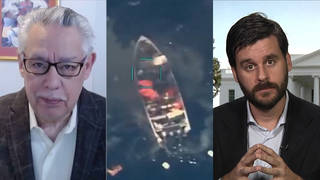
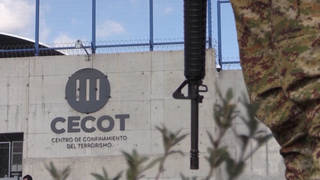
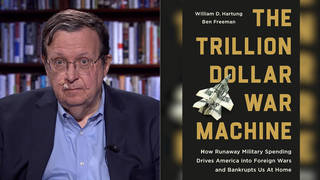
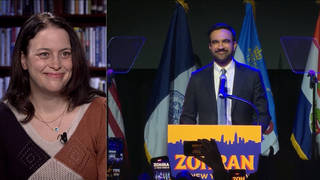





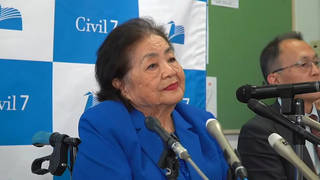
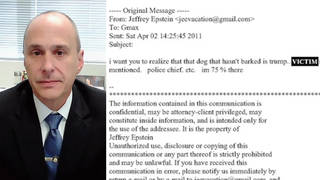
Media Options